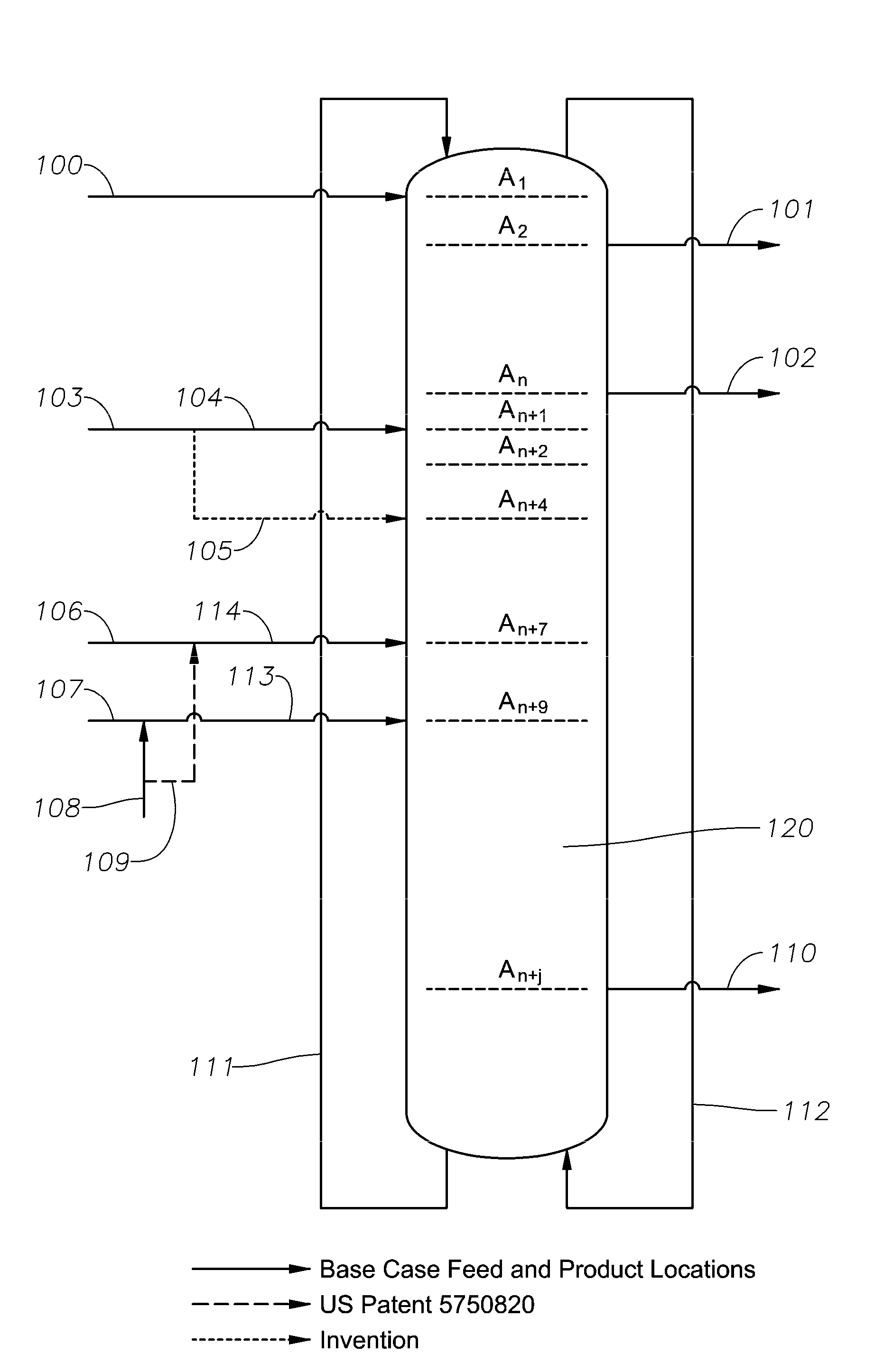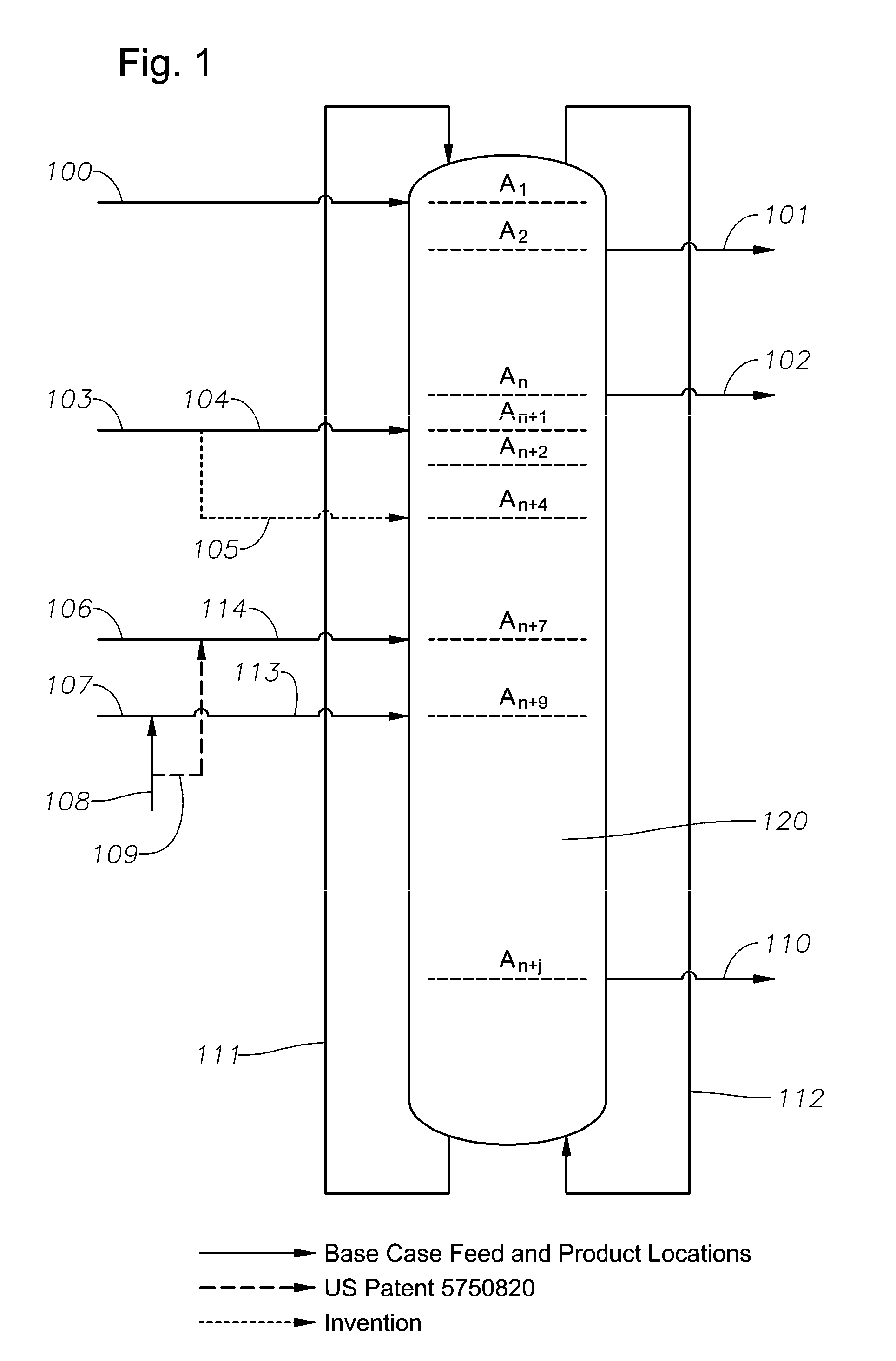Parex Unit Feed
a technology of parex and unit feed, applied in the direction of ion-exchangers, organic chemistry, separation processes, etc., can solve the problems of high energy expenditure, difficult movement of solids through an adsorption apparatus, and difficult separation of components by distillation, so as to increase the capacity reduce contamination, and increase the efficiency of an adsorption apparatus or system
- Summary
- Abstract
- Description
- Claims
- Application Information
AI Technical Summary
Benefits of technology
Problems solved by technology
Method used
Image
Examples
Embodiment Construction
[0042]According to the invention, there is provided a process for separating a product from at least two multicomponent feeds to an adsorption apparatus or system. The apparatus or system may comprise a moving-bed or a simulated moving-bed adsorption means, and in embodiments provides a product comprising at least one organic compound, such as an aryl compound with alkyl substitutes. In embodiments the conduits used to supply the feedstream to the apparatus or system are flushed with media of multiple grades. In embodiments the process achieves improvements in one or more of efficiency of adsorption separation, capacity of adsorption apparatus systems, and purity of product attainable by adsorption process.
[0043]In embodiments the feed location of both the concentrated paraxylene in the primary flush and also the location of the secondary flush are located to realize the full benefit of feed locations. In embodiments, by moving the secondary flush further away from the extract, the ...
PUM
| Property | Measurement | Unit |
|---|---|---|
| step time | aaaaa | aaaaa |
| concentration | aaaaa | aaaaa |
| organic | aaaaa | aaaaa |
Abstract
Description
Claims
Application Information
 Login to View More
Login to View More - R&D
- Intellectual Property
- Life Sciences
- Materials
- Tech Scout
- Unparalleled Data Quality
- Higher Quality Content
- 60% Fewer Hallucinations
Browse by: Latest US Patents, China's latest patents, Technical Efficacy Thesaurus, Application Domain, Technology Topic, Popular Technical Reports.
© 2025 PatSnap. All rights reserved.Legal|Privacy policy|Modern Slavery Act Transparency Statement|Sitemap|About US| Contact US: help@patsnap.com


